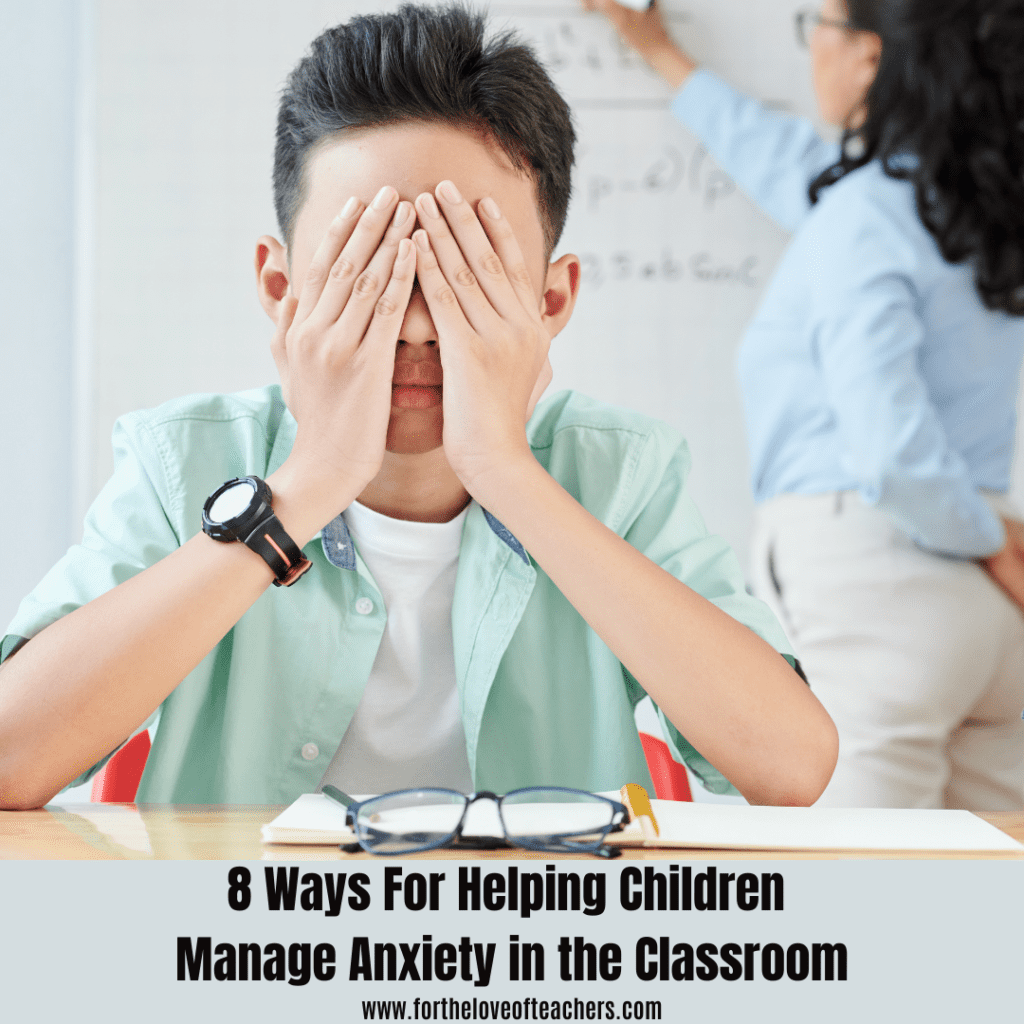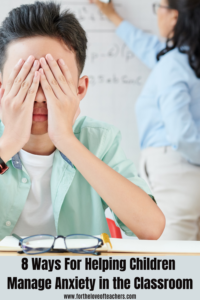
Mazzone, Ducci, Scoto, et. al. (2007) mentioned that anxiety symptoms are relatively common among children and can interfere with functioning. Anxiety may not significantly impact children’s academic performance, but it can have an effect on their learning ability. Relatively, according to IBCCES (2019), when a child has anxiety that goes unnoticed, their mental health can be at risk and this could lead to social and behavioral problems, poor performance and learning, neglected hygiene, poor self-care practices, and low self-esteem.
So many children can have diagnosed or undiagnosed anxiety these days. Trauma, stress, and other mental health disorders make it hard for them to keep up with the pace. But how can teachers establish a classroom environment that is responsive to children with anxiety? Here are some reliable ways:
1. Educate the whole classroom about individual differences
As you know, anxiety is an emotion characterized by feelings of tension, worried thoughts, and physical changes like increased blood pressure. Reducing emotional suppression by establishing a comfortable and open classroom environment can go a long way in managing children with anxiety. While you are at it, educate children on what it is all about so you can also introduce coping techniques they can self-manage with. Share with your students the things you were scared of when you were the same age. Ask for similarities and share how you managed to cope with these things.
2. Validate their feelings
When the student manifests anxiety or worry, offer reassurance by telling them that you acknowledge their feelings. Children highly respect teachers as people of authority and when they know you believe them, it consoles them. Let them know that feeling a certain way is okay. Children take cues from teachers and they can respond accordingly once you show that you accept their thoughts and anxious feelings. Staying calm will enable them to stay calm too.
3. Designate a “decompression” area
This could be a calming corner in your classroom, the classroom or school library, or the nurse’s office. You want to tell all students that if they feel anxious, they can always decompress and loosen up in those places. Remember that you do not want to impose or “send” them over to the decompression area. You want them to identify their own need so as to help them with self-management in the future. Avoid putting them on the back-end seat or at the far end of the room where they can feel directly isolated.
4. Provide distracting activities for the child
Let their minds be roaming somewhere else. Activities like a naming game, play dough or imagining what a dream vacation would look like can help them divert their attention. Reading or listening to music can work just the same. In your lesson design, incorporate role-playing. This is a fun way to practice social-emotional learning and teach children how to accept and react to different situations so you can have a baseline knowledge of your student’s responses to anger, stress, frustration, and anxiety and know what further steps to take. These activities shall hopefully improve their self-awareness, self-management, social awareness, relationships, and responsible decision-making.
5. In activities, let children have the liberty to be in small or big groups
Individual differences mean individual needs and there may be children who are more comfortable being in small groups than otherwise. Let them be where they feel at ease. Eliciting participation from children with anxiety may become even harder if we are not realistic with the rules set.
6. Ask the child for any interventions that could be useful
Be open to how the child wants his anxiety to be addressed. Privately, make him discuss the strategies he wants to take so you can get an insight into how he plans to reduce his anxiety symptoms. Share how you visualize the child overcoming anxiety and what you see in them so they can be motivated.
7. Reward children who display efforts to cope
Giving a reward helps to promote student engagement and reinforce appropriate behavior among them. You may do this by giving out intangible gifts or plain recognition. Reinforcing positive behavior with a simple kudos, a pat on the back or praise for their actions is enough to the child feel good and motivated to do it again. When the child exhibits that he is making an effort to control their anxiety symptoms, always reassure them that you notice and are happy about their efforts.
8. Teach children about relaxation and positive self-talk techniques
Relaxation techniques slow a child’s breathing and reduce any muscle tension. They improve a child’s overall wellbeing, ability to handle pain and pressure, and concentration. Share these techniques with their parents so they can also practice them at home. Positive self-talk, on the other hand, helps children to build confidence and self-esteem. It enables them to see reality in a positive light and be more in control of the events happening around them. You want children to hear themselves say “I can” rather than “I cannot”.
Back to school routines post-pandemic may trigger anxiety among students and can become a challenge to teachers. But, through this list of strategies as well as your solid commitment as a teacher, the way you handle an anxiety-friendly classroom can be life-changing for you and your students.
How do you help children manage anxiety in the classroom? Share in the comments.
About the Author: Kat is a Molecular Biology Scientist turned Growth Marketing Scientist. During her free time, she loves to write articles that will bring delight, empower women, and spark the business mind. She loves to bake but unfortunately, baking doesn’t love her back. She has many things in her arsenal and writing is one of her passion projects.
Thanks for reading!
If you like it, then pin it!



Christine Weis is a passionate educator, classroom management coach, wife, and mom of two busy boys. She enjoys teaching, writing, and creating resources for teachers.




Great tips! talking to kids about anxiety and other mental health issues is so important!
This is so needed, especially now that kids are back in school after not being in a classroom for almost 2 years. It could be overwhelming for the kids who feel they can’t keep up in a classroom, and these tips I’m sure will be of great assistance to teachers.
How sad that more children are now much more stressed and pressured and anxious, when they should be enjoying these years. thank you for your tips, i shall take note of this –I think it’s really important to validate their feelings. In our generation, I think this was missed a lot.
Anxiety has been more of an issue lately because of Covid. It is nice to have the tools to help to manage these situations.
Great tips, let the kids share their useful ideas is great to do with children. My little brother helped me with a craft idea before.
Classroom anxiety should be handled appropriately. I agree that the children should have the freedom to choose if they want a small or big group, or if they prefer to work individually then that’s fine too 🙂
The decompression area is so smart. Often times kids just need to separate themselves from the madness to calm down.
I know my stepdaughter suffers from anxiety really bad and I wish she had something like this in place when it got bad at school. If all classrooms were like this it could help a lot of students.
This is going to help so many teachers. MAnaging anxiety can be especially challenging when it comes to kids. They don’t have nearly as many coping skills as adults.
As the parent of a child with anxiety I love this topic. Thank you for bringing light and ideas to it.
I wish I had a decompression area when I was growing up! Love how more understanding teachers are now, so different from 10, 20, 30 years ago. Not that they lacked compassion but it was more a mentality of this is how it is so you need to adapt. Now teachers cater to different learning styles, anxiety and more. Being a kid is hard and it’s great we recognize it.
My first grader has anxiety and his teacher is amazing with him! When we were under tornado warnings during school hours, she knew he gets anxious so made sure to be near him. He has a 504 plan for some of his big triggers, but just having a teacher that understands is so important.